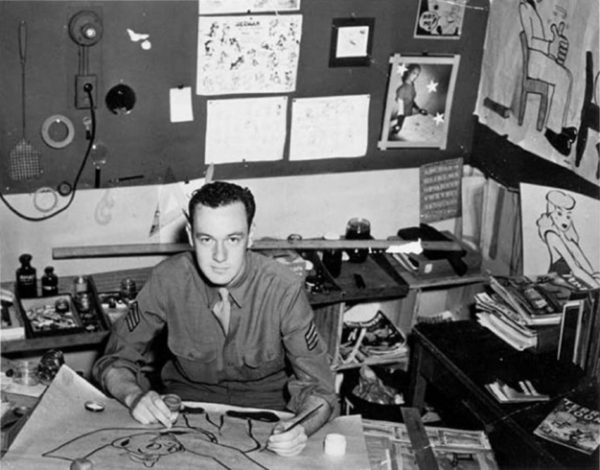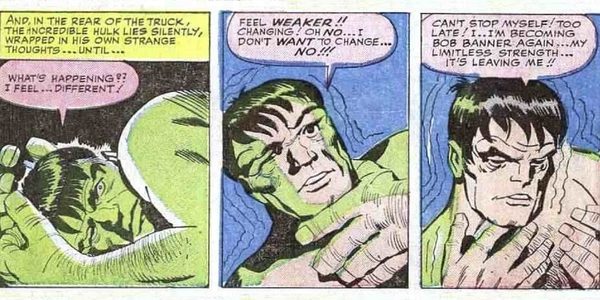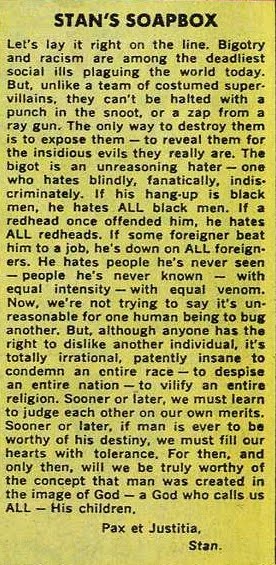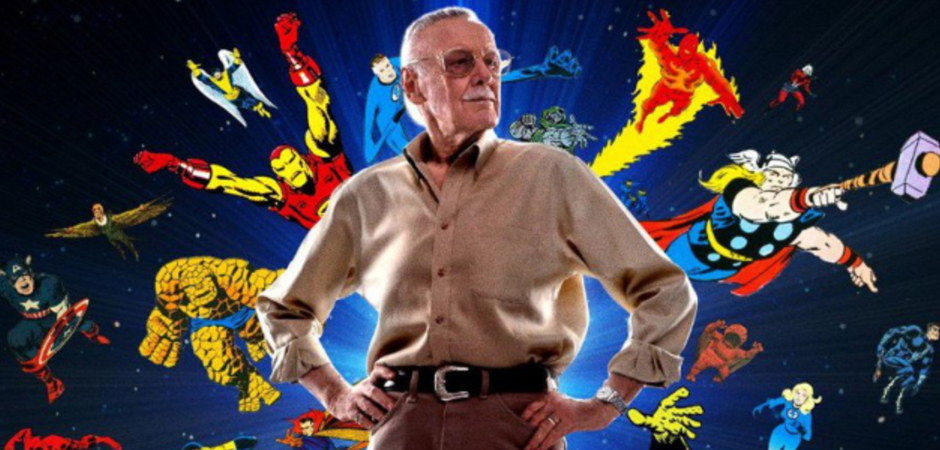On December 28, 1922, in an apartment in New York City, Stanley Martin Lieber was born to Romanian-born Jewish immigrants, Jack and Celia Lieber. The elder of two sons, Stanley dreamed of being a novelist and, though that particular dream did not pan out, he did count a writing gig among the various odd jobs he held in his youth—though it was writing antemortem obituaries for a news office (a job he eventually quit because it was depressing), it was writing nevertheless. Not long after graduating high school, he—thanks to family connections—started working at Timely Comics. His duties, at first, were menial but gave him the opportunity to learn the ins and outs of the comic industry and build the foundational experiences that would lead him down the road to veritable pop culture icon.
Today, we’re celebrating the ninety-fifth birthday of Stan Lee. In myriad ways, Lee has been shaping popular culture for seventy-six years. To celebrate his birthday and his influence on our cultural imaginary, here are five facts about the force behind Marvel’s silver age and the king of cameos.
It took twenty years for Lee to go from his first break to helping spearhead Marvel Comics as we know it.

(x)
In 1941, he got his first break, writing “Captain America Foils the Traitor’s Revenge” in the third issue of Captain America Comics under the pseudonym Stan Lee—which is now his legal name. Later that year, a nineteen-year-old Stan Lee was given the position of interim editor after the less than amicable departure of the previous editor and, showing a good head for the comic business, was eventually named editor-in-chief and art director. Timely Comics would become Atlas Comics in the 1950s and, in 1961—twenty years after his first comics story was published—Atlas was rebranded as Marvel Comics and the silver age of comics began, introducing flawed characters, complex storylines, and, of course, the shared universe.
He worked with Dr. Seuss during World War II.

(x)
Lee joined the U.S. Army in 1942 and served until 1945. He was initially assigned to the Signal Corps, where he was responsible for repairing and maintaining communications equipment. Later, he was transferred to the Training Film Division. During his tenure in that division, he held the title of playwright and worked with the likes of Frank Capra, Charles Addams, William Saroyan, and Theodor “Dr. Seuss” Geisel. Responsible for writing training manuals and scripts for training films, the Training Film Division also cranked out some pretty problematic propaganda (though Geisel is largely credited with the most awful propaganda pieces).
Stan Lee and Spidey challenged the Comics Code Authority.

(x)
In 1971, Lee was asked by the U.S. Department of Health, Education, and Welfare to include a story about the dangers of drug use and abuse. Lee crafted a story for “Amazing Spider-Man,” wherein Peter Parker’s friend, Harry Osborn, overdosed and nearly dies. The Comics Code Authority refused to approve the story because any reference to drug use was not sanctioned. With the support of Marvel’s publisher, Martin Goodman, the issue was published without the CCA seal. The CCA would later change their position and Lee would go on to be a driving force in the modernizing the CCA’s guidelines.
Stan Lee is responsible for the alliterative names of Marvel characters.

(x)
As Marvel ushered in the silver age of comics, Lee was scripting a lot of different comics, nearly all of them, actually. That is a lot of story lines, a lot of heroes, and a lot of names. So, Lee went with alliterative character names in a lot of cases to help keep everything straight: Stephen Strange, Peter Parker, Bruce Banner. While that did help him keep track of all the different characters, there were still some whoopsie-daisies: like when Lee forgot Banner’s first name and called him Bob. Despite the occasional hiccup, the naming convention definitely makes the heroes’ names that much more memorable.
It was also because he was scripting so many stories at the same time that the shared universe came into existence: sometimes, there wasn’t a clear idea of how a story arc would end and leaving it open-ended and shared across comics left room for a different hero to enter the picture and help with any given story arc.
Stan Lee used his platform to champion for social justice.

(x)
The early years of Marvel and Stan Lee’s leadership saw a large number of changes in comics—from storylines to the business of publishing—, and Marvel’s Bullpen Bulletins were a significant departure from comics-past. The Bulletins would tease upcoming storylines and report news about Marvel staff members—who just got married or had a baby—, engendering a sense of community among and between creators and fans. Additionally, the Bulletins also featured “Stan’s Soapbox,” a space where Lee would speak to social and political issues, condemning racism and speaking out against bigotry. However imperfectly, Lee did (and still does) use his platform to advocate for justice—not just in story arcs, though Marvel comics have often included an examination of social issues—directly to his readers. And that may be the fact I most appreciate about him.
Happy Birthday, Stan Lee! Thank you (and Jack Kirby!) for the universes you’ve exposed us to and for the flawed heroes who remind us that we can be heroes too.
Promo photo source (x)




Leave a Reply